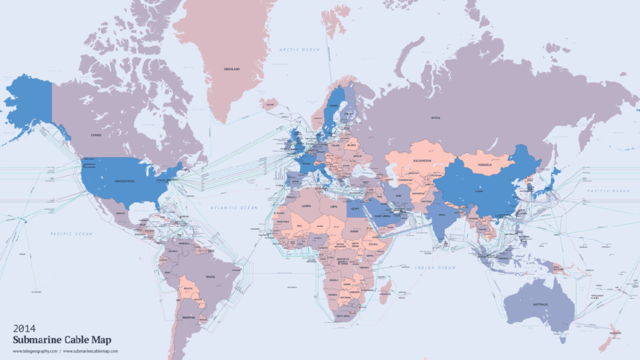Μήνας: Φεβρουάριος 2014
Ένα video για το ρατσισμό
Ρατσισμός – Τζαφάρ.
Ευχαριστώ Κυριάκο που μου το έστειλες!
G.fast λέγεται το επόμενο βήμα στην εξέλιξη του DSL
Έχουν περάσει σχεδόν 15 χρόνια από τη δημιουργία του ADSL (G.DMT), μιας μεθόδου μεταφοράς δεδομένων 8Mbps μέσω των απλών τηλεφωνικών καλωδίων. Αργότερα, το VDSL, ADSL2 και VDSL2, χρησιμοποιώντας πιο προηγμένες μεθόδους διαμόρφωσης, ανέβασαν την ταχύτητα στα 200Mbps.
Το G.fast υπόσχεται να ανεβάσει την ταχύτητα ακόμη περισσότερο, αγγίζοντας το 1Gbps (1000Mbps). Για να το πετύχει αυτό, χρησιμοποιεί το εύρος συχνοτήτων 106 MHz σε αντίθεση με το VDSL2 που χρησιμοποιεί 30 και 17 MHz.
Η χρήση τόσο υψηλών συχνοτήτων και ο θόρυβος της γραμμής, περιορίζουν την εμβέλεια του G.fast στα 250 μέτρα. Αυτό σημαίνει οτι για να έχουμε ταχύτητα 1Gbps, θα πρέπει ο ISP να χρησιμοποιήσει καλώδιο οπτικής ίνας μέχρι το ΚΑΦΑΟ και στη συνέχεια την τεχνολογία G.fast στα τελευταία 250 μέτρα μέχρι το σπίτι ή το γραφείο μας.
7 Questions To Ask Yourself Before Giving An Assessment
From Edudemic
Too often, we spend time trying to determine how to reshape curriculum and instructional strategies so that students will perform well on a given assessment when we should instead be asking how to make assessments work in support of student learning and teachers’ professional growth. But how do you select assessments that are accurate, standards-aligned and powerful enough to measure and support what matters? Here are seven questions to guide your thinking as you shape your classroom, school or district’s assessment toolkit. Continue reading…

7 Apps for Teaching Children Coding Skills

It’s hard to imagine a single career that doesn’t have a need for someone who can code. Everything that “just works” has some type of code that makes it run. Coding (a.k.a. programming) is all around us. That’s why all the cool kids are coding . . . or should be. Programming is not just the province of pale twenty-somethings in skinny jeans, hunched over three monitors, swigging Red Bull. Not any more! The newest pint-sized coders have just begun elementary school.
If you’re concerned that that a) elementary school students don’t have the ability to code, b) there’s no room in the curriculum, and c) you don’t possess coding chops to teach programming skills, throw out those worries. The following sites and apps can help anyone who has basic reading skills grasp the basics of thinking and planning in order to make things happen (the whole purpose of coding) and create applications: interactive games, quizzes, animations, etc. Best of all, many of these tools are free, or almost free, and require no coding background or expertise!
Continue reading from edutopia!


